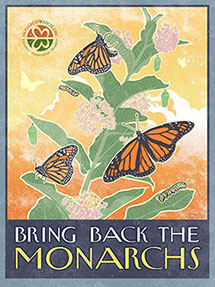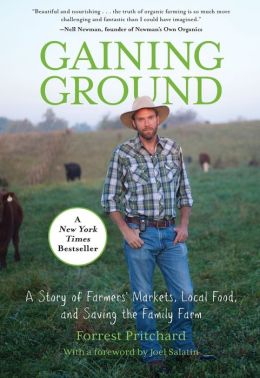
When it comes to environmental issues, human population growth is often the “elephant in the room.” We know it’s an issue, but we don’t talk about it * for fear that the conversation will careen into a ditch of immigration and abortion arguments. Here’s the bottom line: There are currently over 7 billion people on Earth and U.N. demographers estimate that, best case scenario, population will continue to grow until it has reached approximately 9 billion. Each year, the roads seem a little more crowded, housing gets a little tighter, and water becomes a more limited resource. Although the U.S. birth rate is not as high as that of some other countries, we’re all citizens of Spaceship Earth (see? I went all 70s on you). Every person born is a blessing, but he or she is also another person needing access to the Earth’s natural resources – clean water, space to live, food to eat. No one that I know thinks it’s a good idea for governments or religious institutions to mandate family size. That’s why we need to be willing to talk about the topic so that people can make their own informed decisions. When planning the size of one’s family, one consideration should be future generations. The more children we put on the Earth now, the more our great grandchildren will have to share a limited pool of resources.
Many of us have grown up in big families and dream of having a big family of our own – OK. That’s why adoption shouldn’t just be an option for couples who can’t conceive their own biological children; it should be an option that anyone wanting a family should consider. We should encourage open and honest dialog about family size and encourage the discussion of adoption as a great option for building a family (particularly a larger family). Adoption is certainly not an option for everyone – some folks are simply not comfortable with the idea. But I think many more people, including people who can have their own biological children, could be comfortable with adoption and should be encouraged to consider this option.
November is National Adoption Month and November 23 was National Adoption Day; both events are designed to increase awareness of adoption and this year the focus is on the thousands of children in foster care waiting to find permanent homes. Adoption is great for kids waiting on a permanent home, great for the families who would be welcoming a wonderful new family member, and great for a sustainable future.
* Current conversation in Conservation Biology, regarding consumption and population, excepted:
Allendorf, T.D. and K. Allendorf. 2012. What every conservation biologist should know about human population. Conservation Biology 26: 953-955.
Hurlburt, S. 2013. Critical need for modification of U.S. population policy. Conservation Biology 27: 887-889.
 As we celebrate 40 years of the U.S. Endangered Species Act, Senators Paul, Heller, and Lee have introduced Senate Bill 1731. This bill proposes delisting all listed species after 5 years, regardless of whether they’ve been recovered, and moves management of endangered species to the states (which we all know is a great idea, since animals and plants always stay within the border of one particular state -- check out the
As we celebrate 40 years of the U.S. Endangered Species Act, Senators Paul, Heller, and Lee have introduced Senate Bill 1731. This bill proposes delisting all listed species after 5 years, regardless of whether they’ve been recovered, and moves management of endangered species to the states (which we all know is a great idea, since animals and plants always stay within the border of one particular state -- check out the 


 Like getting all the latest green news? Be sure to
Like getting all the latest green news? Be sure to  Could you be part of a scientific study? You bet! Many scientific studies that gather information on populations use “citizens scientists”. If you’re interested in getting involved, check out these interesting programs:
Could you be part of a scientific study? You bet! Many scientific studies that gather information on populations use “citizens scientists”. If you’re interested in getting involved, check out these interesting programs:
 Want to keep up on all the latest green news? Be sure to
Want to keep up on all the latest green news? Be sure to 



 . This time our net was filled with over 100 clams; we also had several big invertebrates like
. This time our net was filled with over 100 clams; we also had several big invertebrates like 
 On our
On our 